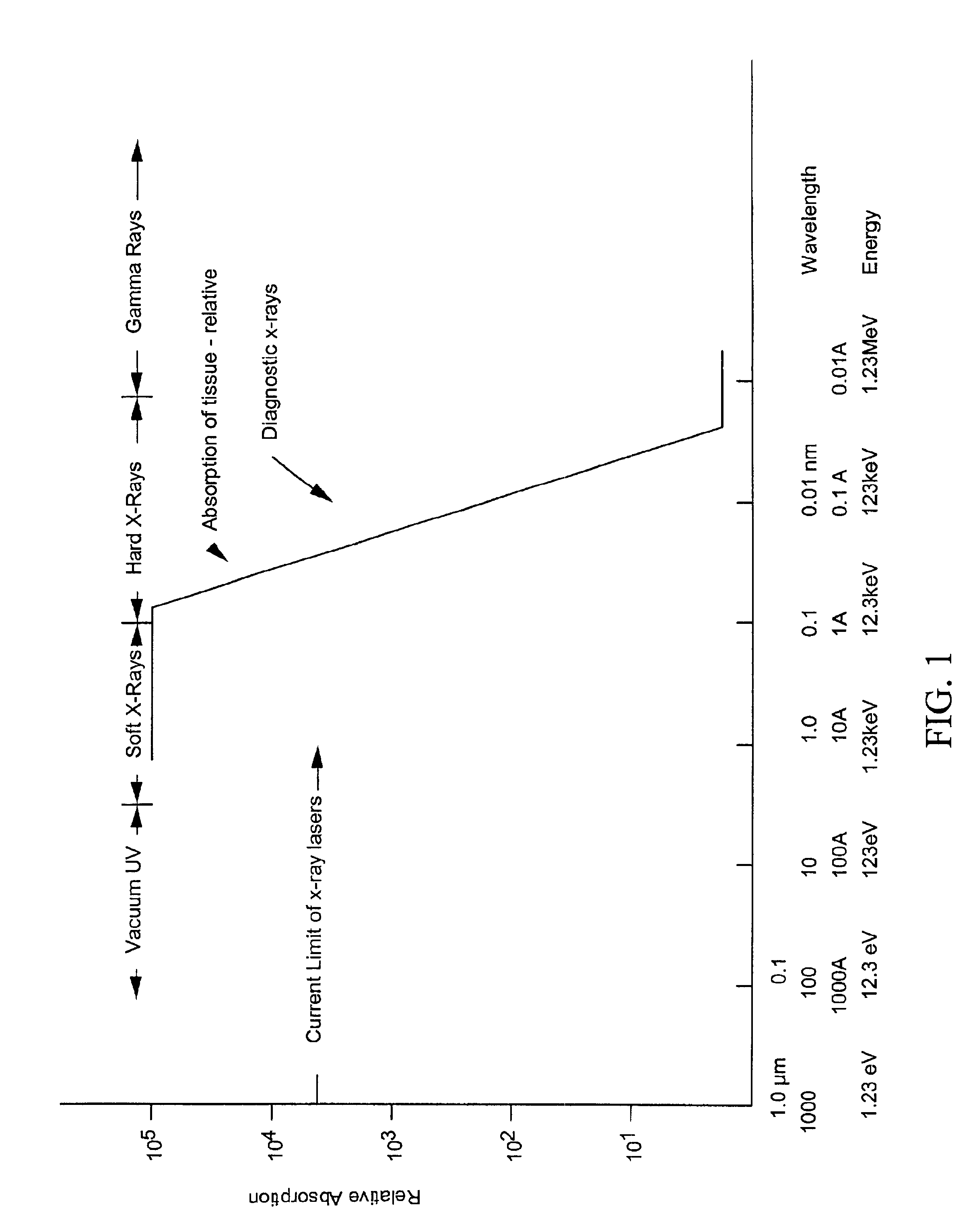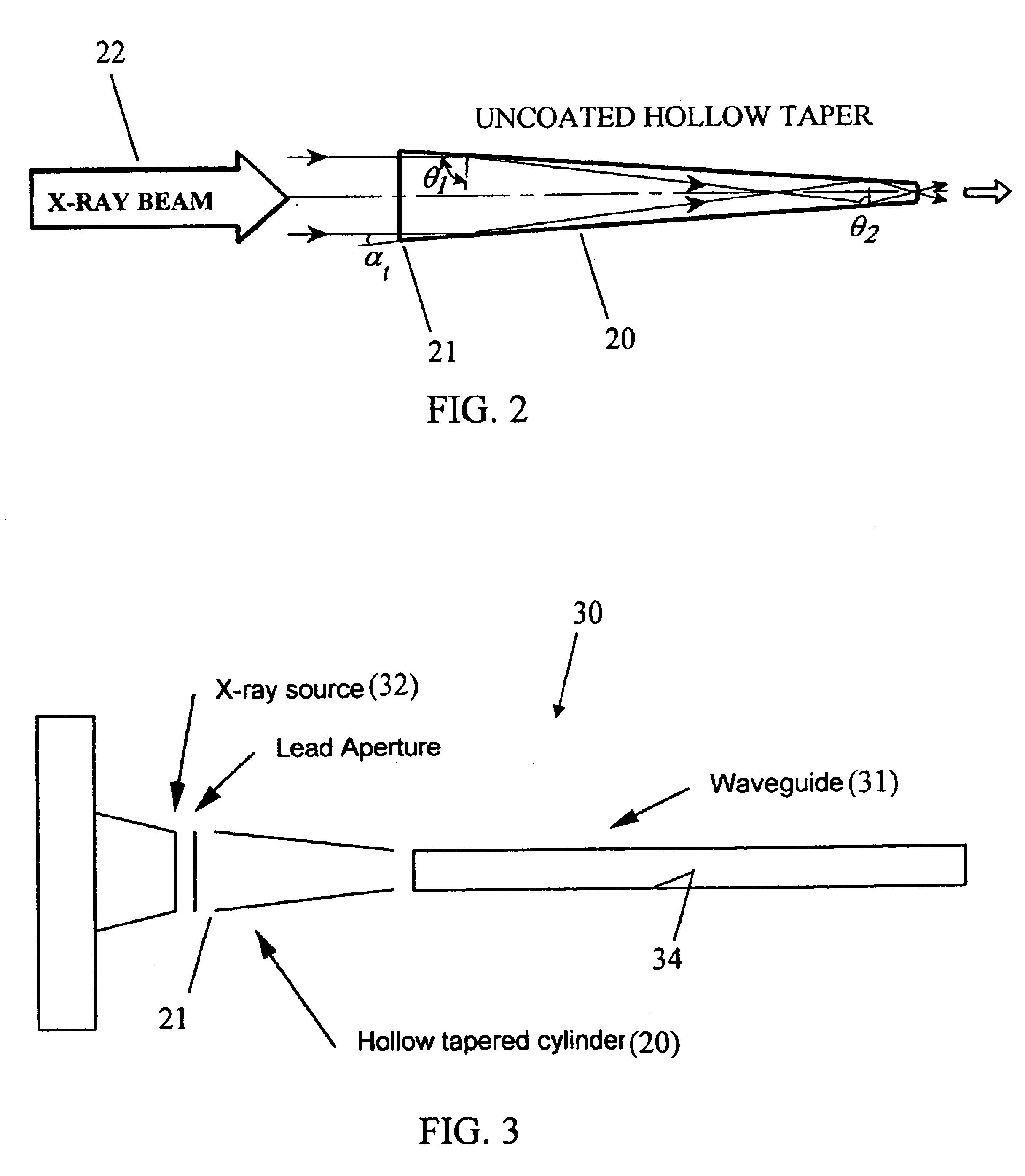Method and apparatus for delivery of x-ray irradiation
a technology of x-ray irradiation and x-ray light, which is applied in the field of x-ray irradiation, can solve the problems of arterial contraction, large increase in blood flow, and rapid accumulation of plaque, so as to prevent arterial clogging, prevent restenosis, and prevent arterial clogging
- Summary
- Abstract
- Description
- Claims
- Application Information
AI Technical Summary
Benefits of technology
Problems solved by technology
Method used
Image
Examples
Embodiment Construction
The subject invention relates to a method and apparatus for the generation and / or delivery of x-rays. In a specific embodiment, the subject invention can utilize hollow waveguides to convey x-ray radiation generated outside of the body into the body to a specific internal surface for a variety of purposes, for example, for medical therapy. For example, the x-ray radiation can be delivered to an arterial wall for the prevention of restenosis following balloon angioplasty. In another embodiment, the x-ray radiation can be delivered into the body to kill tumors with a lesser degree of collateral damage to body tissue than has previously been realized. The x-ray radiation used to treat tumors, for example, can be collected by non-imaging optics and delivered through stereotactically guided needles by hollow waveguides.
X-ray radiation has several applications in the medical field. In addition to imaging, x-rays can be used as a therapy treatment to treat numerous medical conditions. The ...
PUM
 Login to View More
Login to View More Abstract
Description
Claims
Application Information
 Login to View More
Login to View More - R&D
- Intellectual Property
- Life Sciences
- Materials
- Tech Scout
- Unparalleled Data Quality
- Higher Quality Content
- 60% Fewer Hallucinations
Browse by: Latest US Patents, China's latest patents, Technical Efficacy Thesaurus, Application Domain, Technology Topic, Popular Technical Reports.
© 2025 PatSnap. All rights reserved.Legal|Privacy policy|Modern Slavery Act Transparency Statement|Sitemap|About US| Contact US: help@patsnap.com



